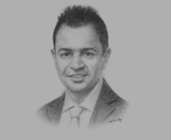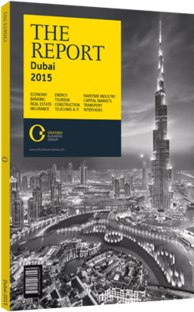Adnan Chilwan, CEO, Dubai Islamic Bank: Interview

Interview: Adnan Chilwan
How will the unification of economic programmes under the Dubai Islamic Economy Development Centre (DIEDC) affect local Islamic banks?
ADNAN CHILWAN: There are a total of 47 initiatives within the seven pillars upon which Dubai’s Islamic economy strategy is based, many geared towards financial services. Further progress on these initiatives will create many new opportunities for Islamic banks. Although some initiatives had started prior to the formation of the DIEDC, the organisation functions as an aligning body that brings the interests of government departments, corporates and financial institutions together. We are already seeing the ripple effect of DIEDC’s efforts in NASDAQ Dubai’s renewed focus on bringing more capital markets issuances to Dubai, which would have gone to other foreign jurisdictions in the past.
We are also seeing more firms looking to tap into the market for Islamic paper, which has been met with broad investor appeal. This is particularly encouraging as, unlike conventional paper, where issuers lose the Islamic market, sharia-compliant debt instruments cater to both segments and thus offer a wider investor base.
In what area might Dubai be able to capture a larger share of global sharia-compliant transactions?
CHILWAN: As the volume of lending activity grows across the GCC, commodity murabaha (a type of sharia-compliant sales transaction) will be increasingly used by Islamic banks to get liquidity to consumers. A number of initiatives within the UAE over the past decade have aimed at bringing more aspects of commodity trading activity to the country. However, these approaches have often been too fragmented. NASDAQ Dubai's recently launched murabaha trading platform is a vehicle that can approach entities across the GCC – which are currently using London Metal Exchange (LME) services – and offer them a solid local alternative. The LME had considered setting up trading desks in Dubai some years ago, but the proposal lacked a catalyst at the time. The subsequent global financial crisis led to a cancellation of these plans. Therefore, the introduction of a regional alternative will be timely.
In what ways could improved credit profiles affect UAE companies’ borrowing activities?
CHILWAN: Domestic funding is very cheap, as most local financial institutions are net lenders and are competing heavily on rates. The abundance of liquidity in the UAE leads to a low cost of funds for banks, allowing them to finance at far more attractive rates while still maintaining strong spreads. Even large corporates only look to tap regional and international funds once they exhaust all local facilities. Beyond the largest companies, firms are not expected to look further afield than the local market for their borrowing needs. After all, opening their books and going through a rating process has little appeal so long as access to local dirhambased funding remains healthy.
How will the transition to Basel III impact smaller, more competitive markets such as the UAE?
CHILWAN: The capital adequacy ratios of banks in the UAE are quite healthy when compared to global players, leaving the industry well equipped to handle Basel III compliance requirements. Basel III emphasises Tier 1 over Tier 2 capital, and most local banks have put considerable focus on enhancing their Tier 1 ratios since the financial crisis. Though many local banks have some Tier 2 instruments on their balance sheets, these are very small compared to the total capital base.
Moving forward, there will be opportunities for Islamic banks to gain market share from conventional banks looking to close their Islamic windows due to new regulatory and capital adequacy requirements. At the end of the day, capital is finite and must be deployed in a way that offers the maximum return on equity. Conventional banks in the region have had to weigh options between their core business and pursuing Islamic banking, and many have chosen the former to avoid putting too much pressure on their conventional business.
You have reached the limit of premium articles you can view for free.
Choose from the options below to purchase print or digital editions of our Reports. You can also purchase a website subscription giving you unlimited access to all of our Reports online for 12 months.
If you have already purchased this Report or have a website subscription, please login to continue.

